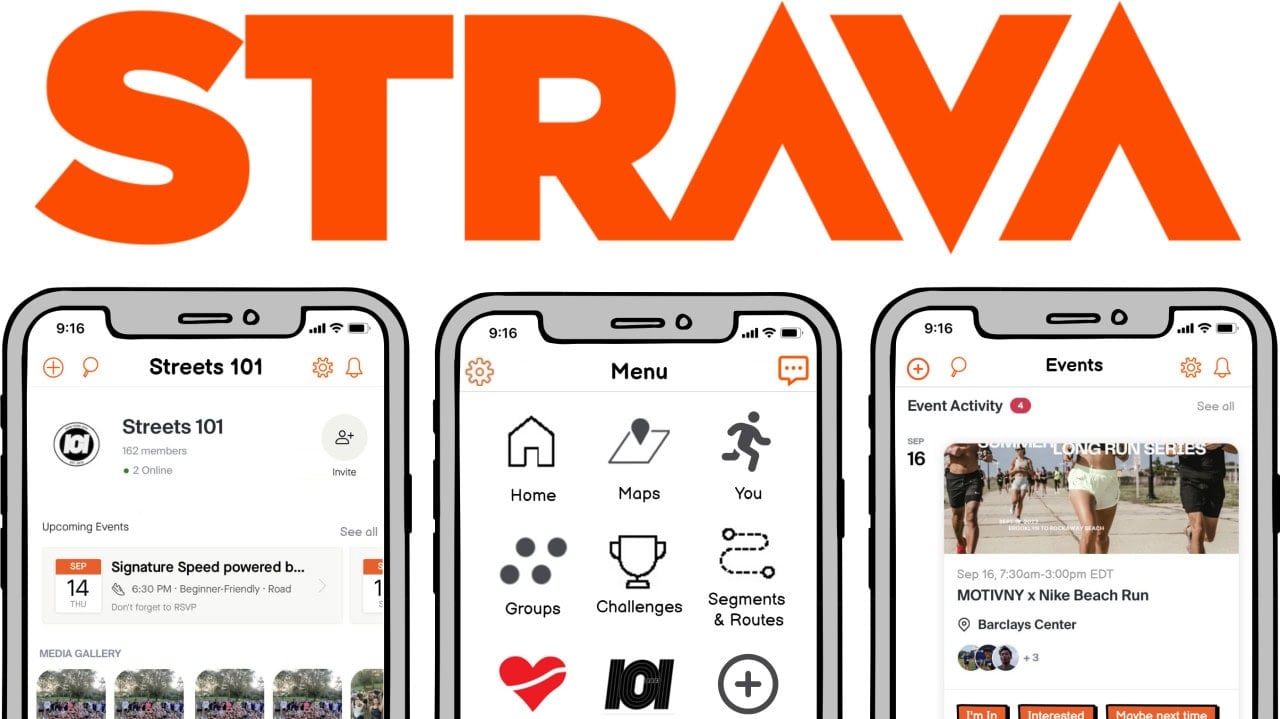As a running coach and competitive runner, one of my top priorities is helping athletes reduce their risk of injury.
Along with key strategies like following a smart training plan, listening to your body, replacing worn-out shoes, incorporating strength work, and mixing up workouts, the type of surface you run on can play a big role in keeping you healthy.1Taunton, J. E. (2003). A prospective study of running injuries: the Vancouver Sun Run “In Training” clinics. British Journal of Sports Medicine, 37(>3), 239–244. https://doi.org/10.1136/bjsm.37.3.239
Softer surfaces like grass, trails, or synthetic tracks offer more cushioning compared to harder options like asphalt roads or concrete sidewalks.
But here’s the catch: while they can reduce impact, softer surfaces also come with their own challenges, and relying on just one type of terrain isn’t always the best approach.
So what’s the best surface to run on? The truth is, variety is often the key. By incorporating different surfaces into your weekly routine, you can reduce injury risk, improve durability, and enjoy the unique benefits each terrain has to offer.
In this guide, we’ll break down the pros and cons of softer surfaces like trails, sand, and grass versus harder surfaces like asphalt and concrete so you can make smart choices about where to run and keep your training both effective and sustainable.

Which Is The Best Surface To Run On To Reduce the Risk of Injuries?
Generally, there isn’t a single best running surface. Every running surface has its own pros and cons.
Softer options like grass, trails, and tracks provide cushioning and can be easier on your joints, but their uneven terrain and extra “give” can put more demand on your muscles and increase the risk of things like ankle sprains or Achilles issues.
Harder surfaces like asphalt and concrete, on the other hand, offer smoother footing and better energy return, making them great for speed work and road racing prep. But with that comes higher impact forces, which can raise your risk of stress-related injuries.2NILSSON, J., & THORSTENSSON, A. (1989). Ground reaction forces at different speeds of human walking and running. Acta Physiologica Scandinavica, 136(2), 217–227. https://doi.org/10.1111/j.1748-1716.1989.tb08655.x
Ultimately, the best surface depends on your goals.
Trail runners benefit from training on trails to adapt to uneven terrain, while road racers need to spend time on asphalt to get their bodies ready for race day.
In most cases, variety is the smartest approach—mixing surfaces helps you stay strong, balanced, and less injury-prone. Specificity of training is important for optimizing your performance and reducing your risk of injury on race day.

The Ultimate Guide to Running Surfaces: What’s Best for You?
#1: Grass
Grass can be an excellent running surface for anyone dealing with knee pain, shin splints, or a high risk of stress fractures. It also helps strengthen the ankles thanks to its natural instability.
The best options are well-maintained fields, like football fields, golf courses, or manicured cross-country courses, where the grass is short and footing is predictable.
That said, grass isn’t without drawbacks.
Uneven or long grass can make running awkward and increase the risk of ankle sprains (not to mention ticks). Morning dew or post-rain mud can also leave your shoes soaked, which is uncomfortable, slows you down, and raises the risk of blisters or a slip and fall.

#2: Sand
Sand is one of the softest, joint-friendly running surfaces3Jafarnezhadgero, A. A., Fatollahi, A., & Granacher, U. (2022). Eight Weeks of Exercising on Sand Has Positive Effects on Biomechanics of Walking and Muscle Activities in Individuals with Pronated Feet: A Randomized Double-Blinded Controlled Trial. Sports, 10(5), 70. https://doi.org/10.3390/sports10050070 and running on the beach can certainly be enjoyable.
However, running in sand is extremely tiring, particularly running in dry sand because the sand doesn’t stay put when you land or push off.
This decreases energy return.
It also increases the risk of Achilles tendinitis, ankle sprains, plantar fasciitis, and pulling a muscle, such as a quad strain or calf strain.
Wet-packed sand is generally a better running surface.
However, much like a cambered road that is sloped for drainage, running on the beach is usually also a cambered running surface as the shore slopes down to the water’s edge.
Running on cambered roads can put runners at risk because the slope creates an uneven landing with each step, as one leg is always slightly higher than the other.
Over time, this imbalance can lead to extra stress on the knees, hips, and ankles, which increases the risk of overuse injuries such as shin splints, IT band syndrome, or hip pain.
It is important to switch directions frequently to prevent knee pain and hip pain due to the uneven surface.

#3: Treadmills
High-quality treadmills are designed with cushioned decks that reduce impact, making them a low-stress option for joints.
The treadmill belt also provides an extremely smooth and consistent surface, which is ideal for controlled workouts, speed training, or as a safer alternative to running outside in the dark, where uneven footing and potholes can lead to injury.
That said, treadmill running has its drawbacks. Because the belt is so smooth and the motor assists your stride, it’s important to set the incline to 1% to better mimic the metabolic and muscular demands of outdoor running.4Jones, A. M., & Doust, J. H. (1996). A 1% treadmill grade most accurately reflects the energetic cost of outdoor running. Journal of Sports Sciences, 14(4), 321–327. https://doi.org/10.1080/02640419608727717
Additionally, the uniformity of treadmill running means every foot strike is identical, which can increase the risk of overuse injuries over time due to the lack of surface variety.
#4: Trails
Trail running provides natural cushioning and engages a wider range of muscles, particularly in your core and hips, as you work to stabilize yourself on uneven terrain. This makes it an excellent way to build strength and improve balance.
That said, rocky or technical trails can increase the risk of ankle sprains, and because you constantly need to watch your footing, trails are not usually ideal for speed workouts.
Pushing too hard without focusing on form and obstacles can heighten your risk of injury, while running more cautiously will naturally limit your pace compared to smooth pavement.

#5: Synthetic Tracks
Synthetic running tracks are often considered one of the best surfaces for runners thanks to their cushioning and consistency. The vulcanized rubber material helps absorb impact while still providing enough rebound for efficient running.5Zhou, W., Lai, Z., Mo, S., & Wang, L. (2021). Effects of overground surfaces on running kinematics and kinetics in habitual non-rearfoot strikers. Journal of Sports Sciences, 1–8. https://doi.org/10.1080/02640414.2021.1898194
Even older cinder tracks, though less advanced, offer a softer and more forgiving surface than asphalt or concrete.
Another advantage of the track is its predictability.
The flat terrain, measured distances, and smooth footing make it ideal for structured workouts like intervals and other speed workouts. This controlled environment allows runners to focus purely on effort, pacing, and form without external variables like hills, traffic, or uneven footing.
However, relying on the track for all your running can become monotonous over time. The repetitive motion of running in circles, especially always in the same direction, can place uneven stress on the body.
This may lead to irritation in the hips, knees, or ankles. For distance runners, logging long runs on the track can feel mentally draining as well.
To prevent overuse issues and burnout, it’s best to use the track strategically for speed sessions while keeping most mileage on varied terrain.
#6: Asphalt Roads
Asphalt is softer than concrete, but it is still considered a hard surface, which means running on it places significant impact stress on bones and joints.
Over time, this can contribute to overuse injuries like shin splints, stress fractures, and knee pain, especially for runners who log high mileage or lack proper footwear.
Additionally, many asphalt roads are cambered for drainage, forcing runners to run slightly tilted.
While asphalt is the most common and accessible surface for road runners and racers, it’s important to balance it with softer terrain when possible and to stay alert to avoid hazards.
#7: Snow
Running on fresh snow can initially feel soft and forgiving since the snow absorbs some of the impact forces, reducing stress on the joints.
However, snow is also slippery, which makes it harder to maintain stable footing. Packed or deep snow requires significant adjustments to your running form and technique in order to stay balanced, forcing your stabilizing muscles to work much harder.
These changes not only slow your pace considerably but also increase the risk of slips, falls, and overuse injuries from the altered mechanics.

#8: Concrete
Running on concrete is considered one of the harshest surfaces for runners. Because it is extremely rigid, there is almost no shock absorption, meaning your bones, joints, and muscles take on the full brunt of the impact with every stride.
This is particularly problematic for runners in minimalist shoes or those with limited cushioning, as there is little to no protection from repetitive stress.
For runners who train in urban environments where concrete sidewalks are common, alternating routes to include softer surfaces such as asphalt, grass, or trails can help reduce injury risk. Properly cushioned shoes and mindful recovery strategies are also essential if concrete running is unavoidable.
Overall, there are pros and cons to all of the different running surfaces.
The best strategy is to run on a variety of surfaces, focusing on those that line up with your intended racing environment or choosing the type of running surface based on your injury risk history.
Running on softer surfaces is best if you are prone to joint pain or bone injuries, and running on harder surfaces is best if you are prone to tendinitis, muscle injuries, and ankle sprains.
For more information on running in the snow, check out the next guide:












The variable with asphalt is the temperature. It’s like concrete when it’s frozen. More forgiving in hot weather when it’s softer.
The other factor is shoes. There are shoes out there now that are so cushy, you can be on concrete but they feel like you’re on a synthetic track. Those shoes, Mizuno Neo Vista for example, are only good on paved surfaces in my opinion.
When it comes to cambered streets, I like to run when traffic is at a minimum, like early in the morning, so I can get out in the middle where the surface is almost flat.
Fresh snow is awesome! But you have to have shoes with studs or pull on rubber treads that have studs.